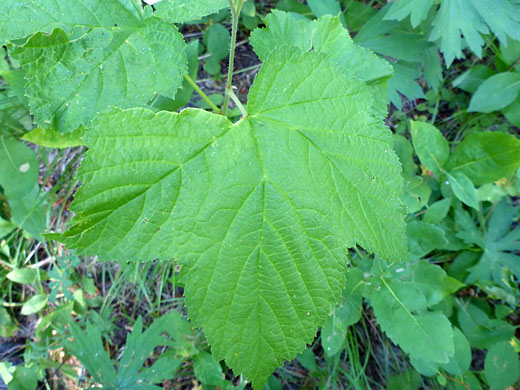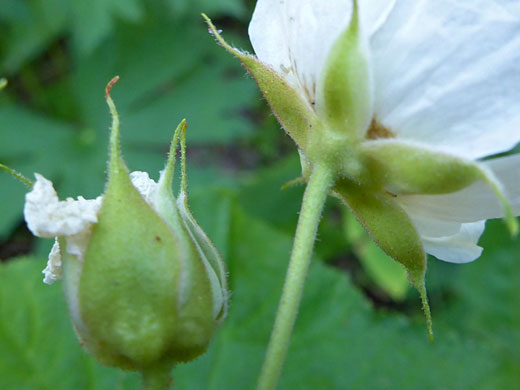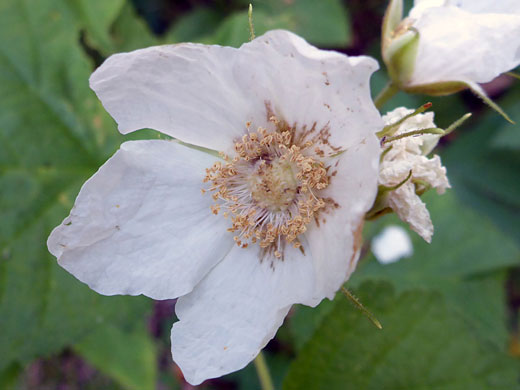
Five white petals of rubus parviflorus, along the Two Ocean Lake Trail, Grand Teton National Park, Wyoming
Common name:
Thimbleberry
Family:
Scientific name:
Rubus parviflorus
Main flower color:
Range:
The Rocky Mountain states, all states to the west, and South Dakota
Height:
Up to 8 feet
Habitat:
Streambanks, meadows, moist hillsides, beach margins, roadsides, sandy places; from sea level to 10,000 feet
Leaves:
Alternate, shallowly lobed and prominently veined, up to 7 inches wide
Season:
May to August
Rubus parviflorus, thimbleberry, is a large shrub, widespread across much of the West, that can form dense clumps 8 feet high and many feet wide. Stems lack prickles, but do have a sparse covering of glandular hairs. The maple-like leaves are large, partially palmately divided into 3, 5 (most common) or 7 broad lobes, with small, irregular teeth along the margins. Leaves may be glabrous or hairy; hairs are most dense on the undersurfaces. Leaves are attached by long, glandular hairy stalks.
Flowers form at the tip of the branches and at the upper leaf nodes; they have five green, glandular, spreading sepals which taper to an extended, narrow tip, and five much broader white petals, obovate in shape, and up to one inch in length. The margins of the petals are somewhat crinkled. The numerous stamens have white, thread-like filaments and yellow-brown anthers. The edible fruits are dull bed berries containing up to 60 segments (drupelets), a little less than one inch wide.
Flowers form at the tip of the branches and at the upper leaf nodes; they have five green, glandular, spreading sepals which taper to an extended, narrow tip, and five much broader white petals, obovate in shape, and up to one inch in length. The margins of the petals are somewhat crinkled. The numerous stamens have white, thread-like filaments and yellow-brown anthers. The edible fruits are dull bed berries containing up to 60 segments (drupelets), a little less than one inch wide.
All Contents © Copyright The American Southwest | Comments and Questions | Contribute | Site Map



